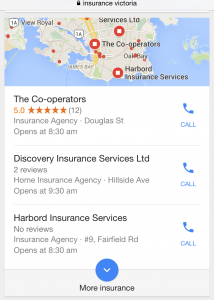— January 16, 2019
 Do you ever walk into a colleague or leader’s office, completely composed, outline a problem, pause and wait for them to tell you what needs to be done? Or worse, a customer or client? In your calmest voice, you say, “The sky is falling.” Pause. “What should we do?”
Do you ever walk into a colleague or leader’s office, completely composed, outline a problem, pause and wait for them to tell you what needs to be done? Or worse, a customer or client? In your calmest voice, you say, “The sky is falling.” Pause. “What should we do?”
Do you go into an operating review knowing that you are going to miss your targets, make excuses, and not bring answers on how to make up the difference?” “The sky is falling. I don’t know why. And Bob never told me that the sky was going to fall.”
If either of these scenarios sound familiar, you know that freezing up or making excuses can be a risk to your work, your reputation and your business – and we definitely don’t want that!
The most successful professionals tackle problems head-on, and view issues as opportunities to apply critical thinking, speak candidly with leaders, and facilitate solutions. They don’t necessarily have all of the answers themselves nor are they always the “smartest people in the room.”
Problem solving skills are essential for building your personal leader brand. This mindset can pay dividends, make you a more desirable team player, and shape your image. Here is some guidance:
Start by framing up the problem and your intent to solve it.
When approaching a leader or colleague with a problem, make sure to open the discussion with some framing. “We are over-budget on our project. I would like to explain the reasons and have some ideas on how we can make-up for the overage. I would like your help in addressing this issue.” In this case, we indicated that we had a problem, said that we had some ideas to solve them but that we weren’t confident, and that we needed the other person’s brain power to solve for it.
Don’t get defensive, bring alternatives.
Recently, one marketing leader went to a business review knowing that he did not achieve his lead generation targets. He made excuses for missing the targets, “We didn’t have new content for the web site. We couldn’t get push emails out the door. And we got product information late.” By getting defensive, the conversation got emotional and combative.
There are times that goals get missed and mistakes are even made. State the facts and identify an alternative or countermeasure to address the gap. “We missed our goals this month for lead generation for several reasons. We have analyzed the issue and are taking these three actions over the next month to address.”
Remember that you are equipped to solve problems.
I recently received an email saying, “I don’t have the capacity to address this issue and need you to provide me with direction.”
Even if you do not have the information or confidence to address a problem, don’t lead with what you don’t have. Lead with what you do have. “We have a situation with safety in our location. Here are the facts that I know about and what I would recommend. What might I be missing and need to consider?”
If what you are really looking for is to vent, ask for a human moment.
Issues in the workplace can be frustrating. When you approach your leader or colleague with a problem, they want to help you solve it; however, that may not be what you are looking for. You may just want to come in and vent.
If you don’t state this intent up front, you may leave the impression of being a complainer. Everyone needs human moments to let off steam. “I need a human moment. May I share my frustrations and then I promise, I will be resilient and start problem solving?”
One leader operations leader set the “five-minute rule.” Anyone can come into her office and vent for five minutes. After that, they have to move into constructive problem solving mode. She said that most people stop after three minutes.
There’s no doubt that business issues will arise – it is all in how we handle and manage through them.
Business & Finance Articles on Business 2 Community
(29)
Report Post







